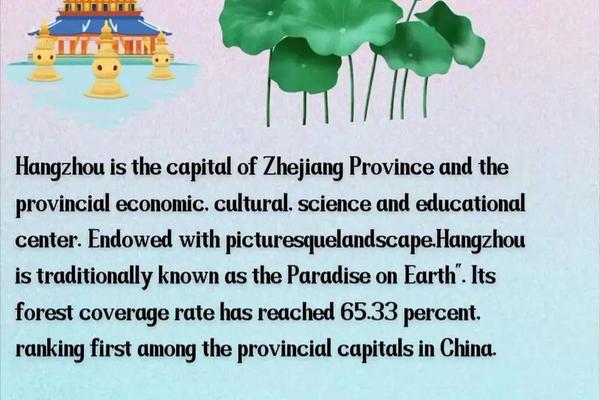特色文化介绍英语、浙江绍兴文化特色
编辑:遁地八字网
2025-04-17 14:04:18
浏览:21次
遁地八字网算命网
Shaoxing's Cultural Features: An English Introduction
Shaoxing, a historic city in Zhejiang Province, China, is renowned for its profound cultural heritage and unique regional characteristics. Here is a structured overview of its cultural highlights, suitable for English-language introductions:
1. Water Town Charm
Shaoxing is often called the "Venice of the East" due to its intricate network of rivers, canals, and arched bridges. Traditional black-canopied boats (乌篷船) glide through waterways, offering visitors a glimpse into the city’s ancient water-based lifestyle. The city’s architecture, with its white walls and gray-tiled roofs, reflects classic Jiangnan (south of the Yangtze) aesthetics.
Key Sites:
Cangqiao Straight Street: A preserved historical area showcasing traditional water-town scenery.
East Lake: A scenic area featuring rock carvings and tranquil boat rides.
2. Calligraphy and Literary Legacy
Shaoxing is the birthplace of Wang Xizhi (王羲之), a master calligrapher of the Eastern Jin Dynasty. His "Prologue to the Lanting Pavilion Collection", written at the Orchid Pavilion (兰亭), is considered a masterpiece of calligraphy and literature. The pavilion, rebuilt in 1548, remains a pilgrimage site for calligraphy enthusiasts.
Cultural Icons:

Lanting Pavilion: Features the "Curved Stream" and "Goose Pond," where Wang Xizhi famously composed his work.
Lu Xun’s Former Residence: Honors China’s greatest modern writer, Lu Xun (鲁迅), whose childhood home and school are preserved in traditional architecture.
3. Historical and Mythological Heritage
Dayu (Yu the Great): A legendary hero credited with taming floods in ancient China. The Mausoleum of Yu the Great (大禹陵) includes a temple complex, burial site, and relics like the Goulou Monument, symbolizing his legacy.
Spring and Autumn Period: As the capital of the ancient State of Yue, Shaoxing retains archaeological and architectural traces from this era.
4. Traditional Performing Arts
Lu Town Shexi (鲁镇社戏): A folk opera with nearly 1,000 years of history, blending music, dance, and storytelling. Performances often depict historical tales and local legends, accompanied by traditional instruments like the erhu and drums.
Shexi’s Challenges: Despite its cultural richness, international dissemination faces hurdles like language barriers and modern competition. Efforts using AIGC digital human technology aim to enhance its global appeal through multilingual解说 (commentary).
5. Culinary and Craft Traditions
Shaoxing Wine (黄酒): A renowned fermented rice wine with a history spanning 2,500 years. It is central to local festivals and daily life.
Stinky Tofu and Meigan Cai: Iconic dishes reflecting Shaoxing’s bold flavors. Meigan cai (梅干菜), a preserved mustard green, is often used in steamed dishes.
Textile Crafts: Keqiao District hosts the China Textile City, the world’s largest textile market, showcasing traditional fabrics like blue calico.
6. Festivals and Modern Events
Dragon Boat Festival: Celebrated with zongzi (glutinous rice dumplings) and boat races, reflecting ancient customs.
Shaoxing Marathon: A cultural-sports event passing landmarks like Lu Xun’s Former Residence and Huangjiu (Yellow Wine) Town, blending history with modern vitality.
Conclusion
Shaoxing’s culture is a harmonious blend of water-town aesthetics, literary brilliance, historical depth, and vibrant traditions. From calligraphy and opera to culinary arts, the city offers a microcosm of China’s Jiangnan heritage. For deeper exploration, visit sites like the Orchid Pavilion or experience Shexi performances to immerse in its timeless charm.
References:



